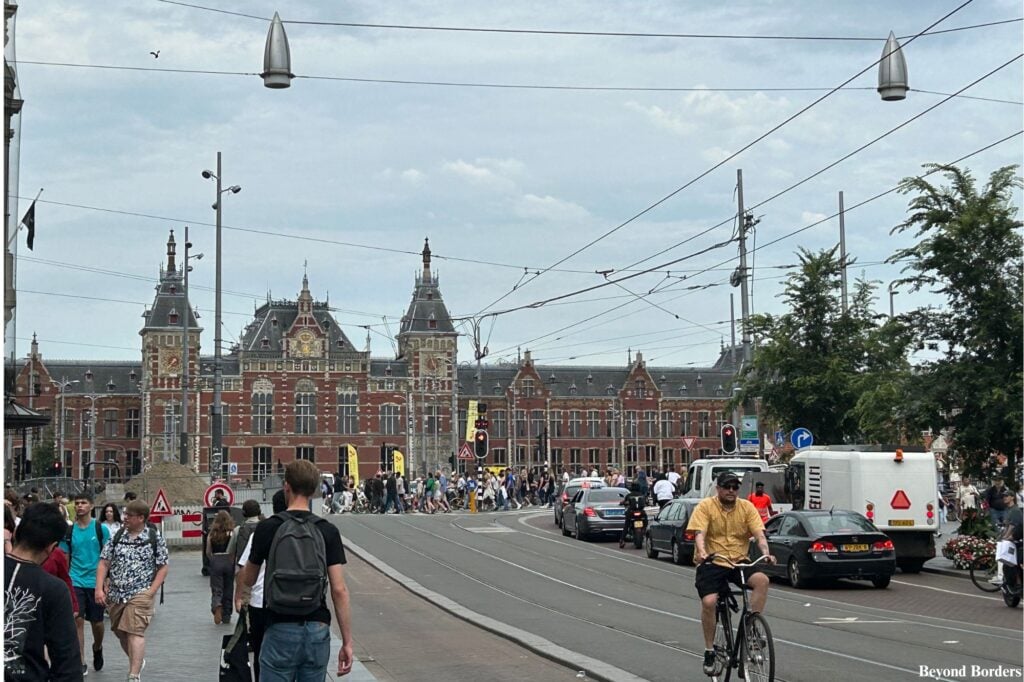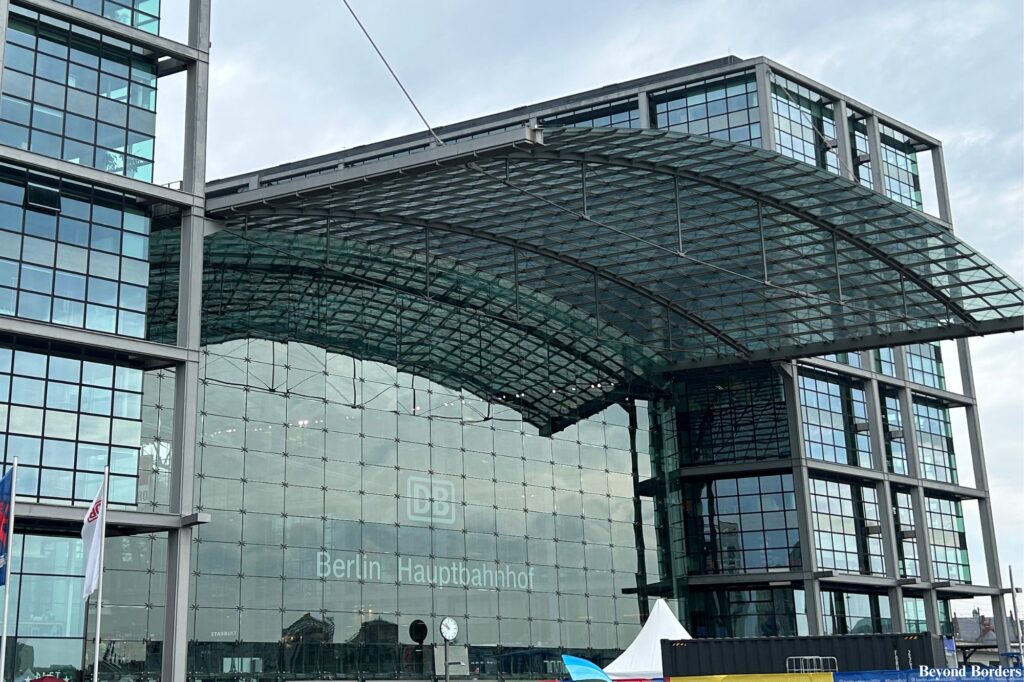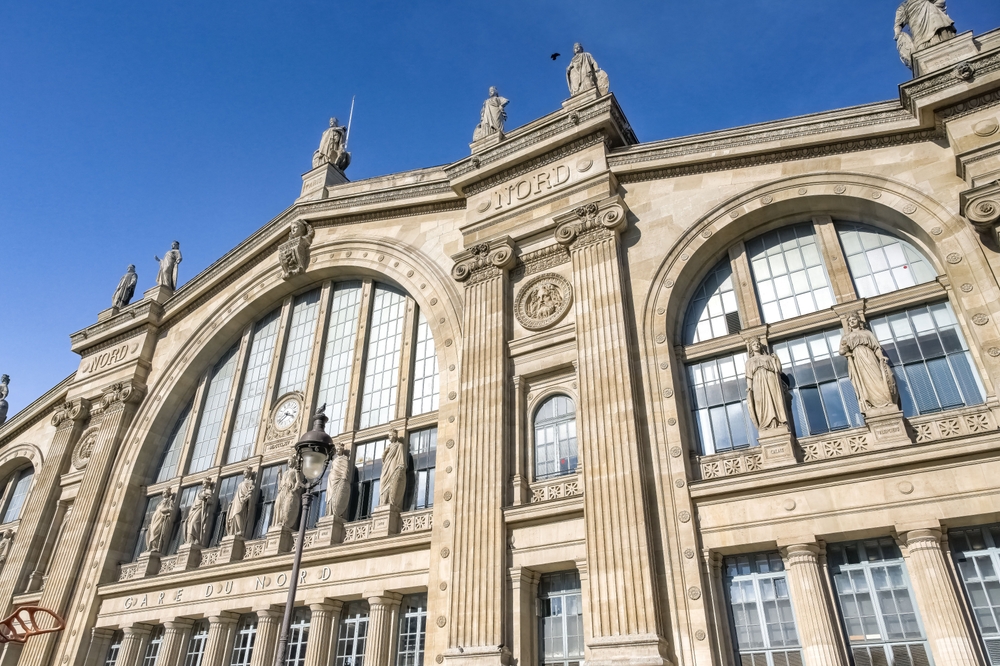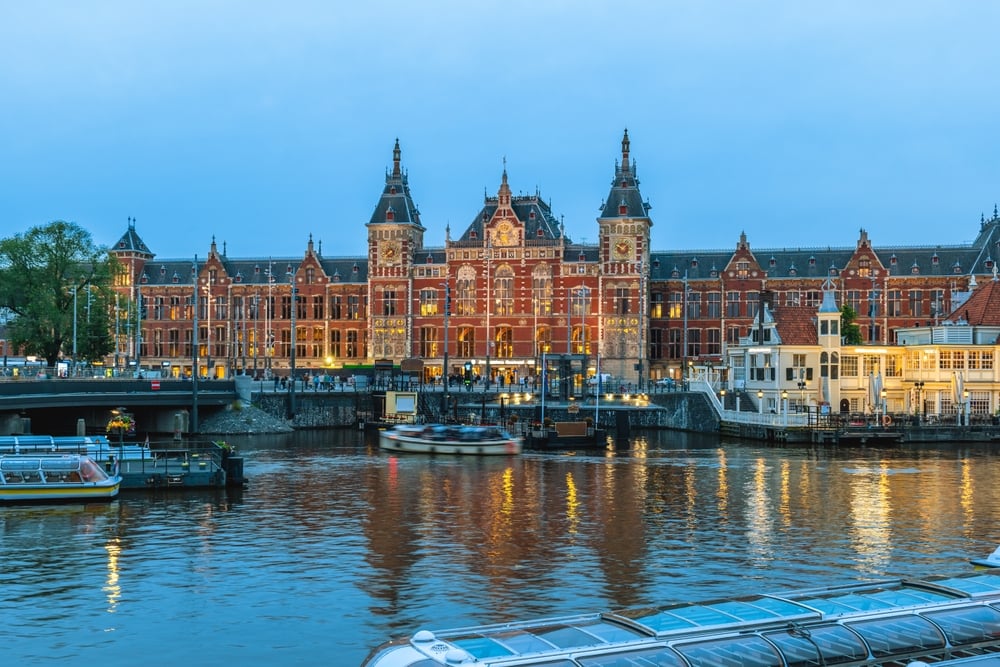You have just landed in a European capital city after your long flight, and all you want is to get to your hotel and start exploring. However, what is standing between you and your hotel in a major European capital is the airport transfer. This first step—getting from the airport to the city center—is often the first expensive hurdle. Smart travelers know that their mission begins with bypassing the taxi line. Why? Frankly, taxis can be a major money drain and a tourist trap. Taxi drivers, especially in places like London, know you don’t know the city and sometimes take the longest route possible just to bump up the fare.
That’s why your best bet, almost every single time, is public transportation. Forget the confusing maps or the language barrier; systems in cities like Paris, Amsterdam, and Copenhagen are straightforward to navigate, even for non-speakers. Using the subway or train will save you tons of money over a taxi—and gives you a major head start on feeling like a local! For example, I mention in my Paris and Amsterdam itineraries to use public transportation and avoid taxis.
Now, what if public transport isn’t close to your destination in the city center? If you have to travel by car, I strongly advise you to skip the taxi and opt for Uber instead (available in most major capitals, though not currently in Copenhagen). Uber’s price is fixed based on the distance, so you won’t have to worry about the fare changing mid-ride.
Ready to save big and travel smart? Here is your essential, step-by-step guide to using public transport from the airport to the city center in 10 European capital cities.
Amsterdam (AMS)
Upon arrival at Amsterdam Airport Schiphol, note that there is no metro connection directly to the city center.
NS train
This is the most efficient and fastest option to get to the city center from the airport. This train departs from a station conveniently located beneath the terminal building (follow the signs to the escalators/elevators). Trains run frequently (up to eight times per hour, 24/7, with reduced night service) and take only about 17 minutes to reach Amsterdam Centraal Station. The easiest way to pay is by using “OVpay,” where you simply tap your contactless credit or debit card at the gate to “check in” before boarding and again at Centraal Station to “check out”; failure to check out can result in a penalty.
Alternatively, you can buy a paper ticket from the bright yellow NS ticket machines in the main hall. A second-class, one-way ticket costs approximately €5.20. For those staying outside the Centraal Station area (like Museumplein or Leidseplein), the Amsterdam Airport Express (Bus 397) is a slower but direct option that serves those popular neighborhoods. Tickets called “Railrunner” for children 4-11 are €2.50, and travel is free for children under 4. Make sure to check the official NS website for up-to-date prices.

Berlin (BER)
From Berlin Brandenburg Airport to the city center, you have excellent and fast public transport options, primarily through trains that leave directly from the terminal.
The Best Option: The Regional Trains (Fast and Direct)
The main train station, Flughafen BER – Terminal 1-2, is located on the lower level (U2) directly beneath Terminal 1. You have a few options for fast, direct connections into the city:
1. The FEX (Airport Express) train stops in Gesundbrunnen, Ostkreuz, and Hauptbahnhof (Berlin Hbf) and takes approximately 30 minutes to get to Berlin Hbf. This train leaves every 30 minutes.
2. The RE8 and RB23 trains stop in Alexanderplatz, Friedrichstraße, and Hauptbahnhof (Berlin Hbf). It takes approximately 35–40 minutes to reach Berlin Hbf on this train, and it departs hourly.
The Cheaper Alternative: The S-Bahn (S9 Line)
The S-Bahn (suburban train) is the local commuter rail. It stops at more stations than the regional trains, making the journey longer, but it’s a great option if your destination is one of its stops. It is on the S9 line that runs toward Spandau, and it takes around 45-50 minutes to reach Berlin Hbf and/or Alexanderplatz. This train runs every 20 minutes and runs 24/7, though it runs less often at night.
Ticket Information
You must purchase an ABC ticket. The airport is in Zone C, and the city center is in Zone A/B. A single-journey ABC ticket costs about €4.40. Tickets can be bought from the red and yellow ticket machines on the train platform level (U2). You can change the language to English on the machine. Remember to validate your paper ticket at the small machine on the platform before boarding!

Copenhagen (CPH)
The Best Option: The Metro (M2 Line)
After arriving at the airport, you can take the metro from Lufthavnen station. This station is the terminus of the M2 line (Yellow line) of the Copenhagen Metro and is located at the far end of Terminal 3, on level 2. A 3-zone ticket is required and costs around DKK 30 (around €4.00). The time it takes to reach Kongens Nytorv station (the station that connects all four metro lines) is only around 15 minutes. The metro runs 24/7, departing every few minutes during the day and every 15–20 minutes at night, so you never have a long wait! The M2 line will take you directly to major city center stops like Kongens Nytorv and Nørreport.
A Good Alternative: Regional Train
If your accommodation is closer to the main train station, the Regional Train is a great, equally fast alternative. It also departs from Terminal 3 and takes you directly to Copenhagen Central Station (København H) in about 15 minutes. The cost is the same (a 3-zone ticket).
Lisbon (LIS)
The key takeaway for Lisbon is that the airport is extremely close to the city center, and the metro is the most logical and efficient way to get there. Lisbon’s airport is very centrally located, just about 7 km from the city center!
Best Budget Option: The Metro
The Metro’s Red Line (Linha Vermelha) connects directly from Terminal 1. It is modern, clean, and the best way to get to the city. The fare is a single ticket price, currently around €1.85. You also need to purchase a reusable “Navegante” card for €0.50 on your first use. The journey to the central metro stations like Alameda (where you can change for other lines) takes about 20-25 minutes.
Best Convenience Option: Ride-Sharing (Uber/Bolt) & Taxis
For groups or those with heavy luggage, Uber and Bolt are excellent and surprisingly affordable. Taxis are also readily available. A typical ride to the city center via Uber/Bolt is around €10-€15. A taxi will be slightly more, but still relatively cheap. The ride can take as little as 15-20 minutes, depending on traffic.
Less Common Option: Aerobus
This is a dedicated airport shuttle bus that goes to major central hubs. Note: While available, it’s generally less efficient and more expensive than the Metro for most travelers, so you can mention it as an alternative but recommend the Metro or ride-sharing as the top choices.
London (LHR)
To get from the airport to the city center, you can take either the Heathrow Express train or the Elizabeth Line. Both of these lines take you to Paddington Station, where you can transfer to an underground (metro) line to get to your accommodation.
Heathrow Express
This is a non-stop service to Paddington Station, located close to Hyde Park in London’s city center. It takes only around 15 minutes from Heathrow (Terminal 2 or 3) to Paddington, and an extra 5 minutes from Terminal 5. Even though taking the Heathrow Express is fast, it is expensive, with a standard single ticket costing around £25 per adult. However, you can get discounted tickets (from only £10) if you book 45 days or more in advance. Kids aged 15 and under travel free with a paying adult in Standard Class.
Elizabeth Line
This is an alternative option for getting to Paddington Station. This train ride is not as quick as using the Heathrow Express, but it’s still fast! The trip from Heathrow to Paddington on the Elizabeth Line takes around 30 minutes. It is also more affordable than the Heathrow Express; a one-way trip between Heathrow and Paddington Station typically costs around £13.90 per adult. You can pay for tickets using a credit or debit card.
Additionally, the Elizabeth Line trains are modern, air-conditioned, and feature a variety of seating. Lastly, from Heathrow, the Elizabeth Line serves all four terminals (2, 3, 4, and 5) and then continues through six key central London stations: Paddington, Bond Street, Tottenham Court Road, Farringdon, Liverpool Street, and Whitechapel.
If your accommodation is close to one of these other stations besides Paddington, feel free to take the Elizabeth Line to these other options rather than to Paddington and transfer to an underground (metro) train!

Madrid (MAD)
Getting from Madrid-Barajas Airport to the city center is straightforward, with several fast and efficient options to suit all budgets and arrival times.
The Best and Fastest Option: Metro (Subway)
The metro from the airport to the city center is on Line 8 (the pink line). This line connects all airport terminals (T1, T2, T3, T4) directly to Nuevos Ministerios station. From here, you will need to transfer to a different line to reach central areas like Sol, Gran Vía, or the Art Triangle. It takes approximately 15-20 minutes to Nuevos Ministerios and a single fare is usually €4.50–€5.00. This price includes the mandatory €3.00 Airport Supplement. You must also purchase a reusable Multi Public Transport Card (€2.50) if you don’t already have one. This train runs from approximately 6:00am to 1:30am.
Cheapest Option: Cercanías Train (Commuter Rail)
This train is on lines C-1 and C-10. This service connects the airport’s Terminal 4 (T4) to major transport hubs like Chamartín, Recoletos, and Atocha (Madrid’s main train station). If you arrive at T1, T2, or T3, you’ll need to take the free airport shuttle bus to T4. This trip takes approximately 25-35 minutes to Atocha Station, and a single ticket is very affordable, typically around €2.60. This train operates roughly from 6:00am to 11:30pm.
24/7 Option: Airport Express Bus (Exprés Aeropuerto)
This distinctive yellow bus is a direct shuttle service that runs from T1, T2, and T4 to key city center stops. During the day (6am-11:30pm), it stops at O’Donnell, Plaza de Cibeles, and Atocha stations. At night (11:30pm-6am), it stops only at Plaza de Cibeles. The airport express bus takes around 30-45 minutes, depending on traffic, and costs a flat fare of €5.00. You can pay directly to the driver with cash or card. This bus runs 24 hours a day, 365 days a year, and features a dedicated space for luggage.
Most Convenient Option: Taxi
Madrid Taxis operate a fixed flat rate of €33 for journeys between the airport and any address within the city’s central ring road (M-30). This includes all airport and time supplements. It takes approximately 20-30 minutes, depending on traffic, and taxi ranks are located just outside the arrivals area of all terminals.
Paris (CDG)
The most common and efficient way to get from Paris Charles de Gaulle (CDG) Airport to the city center is by taking the RER B train.
The RER B Train
This is a regional express train that directly connects CDG to various key stations in central Paris, including Gare du Nord, Châtelet–Les Halles, and Saint-Michel–Notre-Dame. RER B trains run frequently, approximately every 10-15 minutes. The journey to central Paris typically takes around 30-40 minutes, depending on your destination station. A one-way ticket usually costs around €13. While the RER B is a train, it’s integrated into the Paris public transport system, and you can easily transfer to the Metro (subway) lines from the central RER B stations to reach your final destination in the city.
The two RER B stations at CDG
1. Aéroport Charles de Gaulle 1, which serves terminals 1 and 3 (you can take the free CDGVAL shuttle to reach it from Terminal 1)
2. Aéroport Charles de Gaulle 2 TGV, which serves Terminal 2
You can purchase tickets at the “Billets Paris et Ile de France” ticket desks or automated machines at the airport train stations. You can also buy a digital ticket using the Île-de-France Mobilités app or load it onto a contactless Navigo Easy pass.
Important Notes
- Look for signs: Follow the signs for “RER B” or “Trains to Paris” at the airport.
- Keep your ticket: You’ll need your ticket to exit the station at your destination in Paris.
- Mind the rush hour: If you’re traveling with a lot of luggage, try to avoid rush hour (7-9am and 5-7pm on weekdays) as the trains can get crowded.
- Verify your destination: When heading from Paris to the airport, make sure the RER B train you board is indeed going to “Aéroport Charles-de-Gaulle (CDG)” as the line divides.

Prague (PRG)
Unfortunately, Prague has no direct metro or train line from the airport to the city center, so a transfer is required. The airport is about 15-20 km (9.3-12.4 mi) from the city center, making a taxi more expensive and public transport a more common choice.
Best budget option: Public Bus + Metro
This is the most popular way to get to the city center. You take a public bus from the airport to the nearest metro station and then continue your journey on the metro. Popular routes include bus number 119 to the Nádraží Veleslavín metro station (Line A) for access to the Old Town and Prague Castle area, or bus number 100 to the Zličín metro station (Line B). You can use a standard public transport ticket, which costs around 40 CZK (about €1.60) for a 90-minute pass that covers both the bus and metro. The entire journey typically takes about 35-45 minutes.
More Expensive, But Direct Option: Airport Express Bus
This is a direct, dedicated bus service that runs from the airport to the city’s main train station (Hlavní nádraží). Tickets are more expensive than a regular public transport ticket, at around 100 CZK (€4), and are not included in the standard city transport passes. The trip takes about 30-45 minutes.
Convenience Option: Taxis & Ride-Sharing (Uber/Bolt)
Taxis are located outside the terminal, and Uber and Bolt are widely available. A taxi ride to the city center can be around 500-800 CZK (€20-€32), but Bolt is often cheaper, usually in the 400-600 CZK range (€16-24). Taxis and ride-sharing can take around 25-30 minutes, depending on traffic.

Rome (FCO)
Unfortunately, there is no direct metro (subway) line from Fiumicino Airport (FCO) to the city center. Instead, the primary rail links are operated by Trenitalia (Italy’s national train operator), which connects the airport to main rail hubs, where you can then transfer to the metro system.
The most efficient way to get from Rome Fiumicino Airport (FCO) to the city center is by rail, which offers two distinct train services to central Rome.
Fastest and most convenient option: Leonardo Express Train
This is a dedicated, non-stop airport service operated by Trenitalia. It provides a direct, one-stop connection between Fiumicino Airport station and Roma Termini station (Rome’s main transport hub, where the Metro A and B lines intersect). It takes around 32 minutes to reach Roma Termini station and costs a flat fare of €14.00 per person (group discounts may be available). This train runs every 15 minutes (or every 30 minutes during non-peak hours) and operates from approximately 6:23am to 11:23pm from the airport. From Termini Station, you can easily access the Metro (A and B lines) or a taxi to reach your final destination.
Cheapest rail option to other hubs: FL1 Regional Train
This is a commuter line operated by Trenitalia and connects the airport station to other key stations in Rome, such as Roma Ostiense, Roma Trastevere, and Roma Tiburtina, but it DOES NOT stop at Roma Termini. It takes approximately 30-40 minutes to get to your stop (depending on the stop). This costs much less than the express train, usually around €8.00 per person and runs every 15-30 minutes.From these stations, you can transfer to local buses, trams, or the Metro system (e.g., from Ostiense, you can access the Metro B line).
Most Direct Option: Taxis
Rome taxis offer a fixed flat rate of €50 for journeys between Fiumicino Airport and any address within the Aurelian Walls (which covers the main historic center). This includes all supplements for luggage and time. Taking a taxi takes approximately 45-60 minutes, heavily dependent on traffic. Note: Official, white, metered taxis are available at the ranks outside the arrival terminals; ignore any other non-official cars trying to solicit a ride.
Vienna (VIE)
Vienna offers a fantastic contrast in airport transfers to get to the city center due to its premium and budget train options.
The City Airport Train (CAT)
This is the fastest way to get to the city center. It’s a non-stop, dedicated train service. A single adult ticket is around €14.90; you can often get a slightly cheaper price by booking online in advance. The journey is a very quick 16 minutes to Wien Mitte station. This is not Wien Hauptbahnhof (Hbf), Vienna’s main/central train station. Wien Mitte station is located more in the city center than Wein Hbf.
This is a very fast and comfortable train, and it has a unique “city check-in” service at the central station where you can check your luggage for your flight, but it’s the most expensive public transport option.
The S-Bahn (Line S7)
This is the best budget option and is only slightly slower than the CAT; a single journey is around €4.60. This price includes the fare for the suburban train plus the city transport ticket. The journey to Wien Mitte station takes about 25 minutes. This is a very affordable and still quite fast option; it runs on a similar schedule to the CAT. However, it makes more stops, and there is less dedicated luggage space, which can be an issue during peak hours.
ÖBB Railjet
This is a direct train option that connects to Vienna’s main train station (Wein Hauptbahnhof). Tickets start from around €4.10 and it takes around 15 minutes to get to Wien Hauptbahnhof. This is a very fast and cheap option and is ideal for travelers who need to connect to other rail lines from the main station, but it does not go to Wien Mitte (the city center) and can have less frequent departures than the S-Bahn or CAT.
Vienna Airport Lines (VAL) Buses
These buses offer a direct route to major hubs, including both Wien Westbahnhof (Vienna West Station) and Wien Hauptbahnhof (Vienna Central Station). A one-way ticket is about €11 and the journey can take anywhere between 20 to 45 minutes on average, depending on traffic. These buses can be more convenient for travelers staying closer to one of the major train stations rather than the central metro hub, but can be heavily delayed by traffic and are more expensive than the S-Bahn.
Essential Takeaways for a Smooth Arrival
While every city has its own unique transport system, a few universal tips will guarantee the fastest and cheapest possible start to your trip:
Central Station Transfer Reality
For many cities (such as Rome, Madrid, and London), even the fastest airport train will only get you to a central transport hub (like the main station or a metro intersection). Factor in a short, final transfer via metro or a quick taxi/ride-share from that hub to your actual hotel. This second leg can add another 15-20 minutes to your total travel time and should be included in your plan!
The Ride-Share Cost Advantage
As a general rule, in most of these cities (excluding Madrid, which has fixed taxi rates ), using an app-based ride-share service like Uber or Bolt (where available) is usually 20-30% cheaper than a traditional taxi, as they use dynamic pricing that avoids the fixed airport queue surcharge. If you decide to skip public transit, this makes ride-share a strong “convenience/budget” compromise.
Luggage and Local Buses
If you are using a standard city public bus (like Prague’s Bus 119 or Amsterdam’s Bus 397) rather than a dedicated airport express bus, be aware that space for large or multiple suitcases is often limited. These buses are designed for daily commuters, and you may inconvenience other passengers during peak hours. If you have more than one large bag, a train or airport express shuttle is usually a more comfortable choice.
Universal Payment Tip
Even if you don’t use the transit app, check if your destination city’s public transit system accepts contactless credit/debit cards for direct tap-and-go payment. This is becoming standard across many major European cities (like Amsterdam and London) and completely bypasses the need for buying a physical ticket or using local currency for that first trip.
Conclusions
This post shows that a reliable public transport option is always available, but what’s important is choosing the right one for your trip! The key to success is to decide your priority—speed or budget—before you land. No matter which you choose, the best tool to ensure a stress-free journey remains consistent across all ten cities. My tip: The single most valuable tool is the local transit authority’s app. Download it before you leave, check real-time routes, and purchase your ticket digitally. This one simple step will save you time, confusion, and the hassle of foreign cash—making your arrival as smooth as possible.

